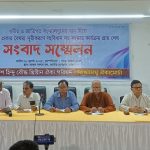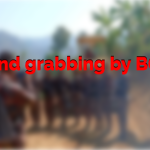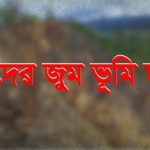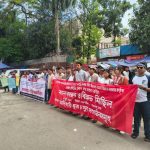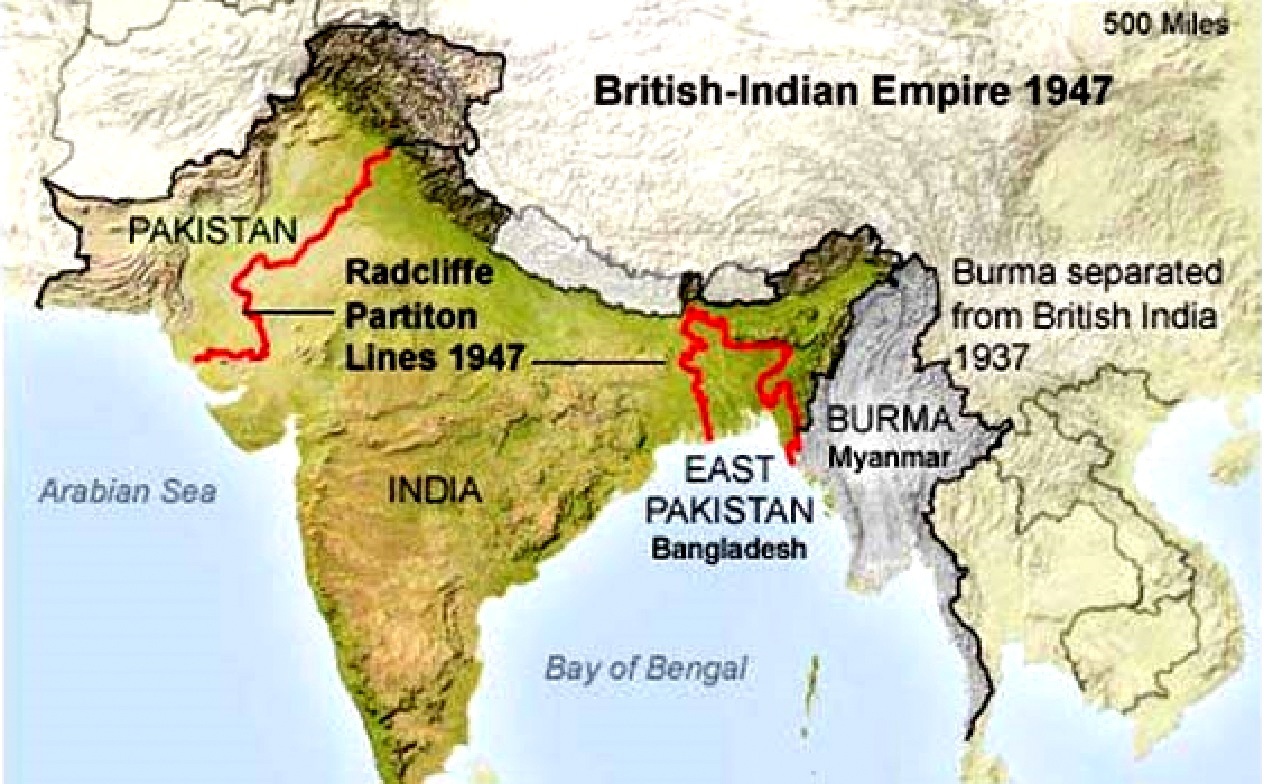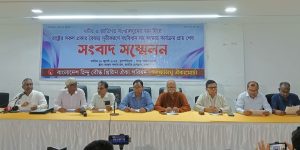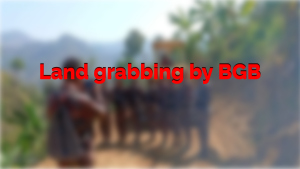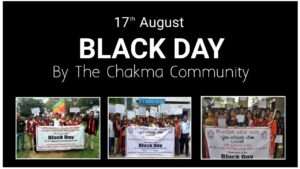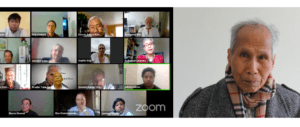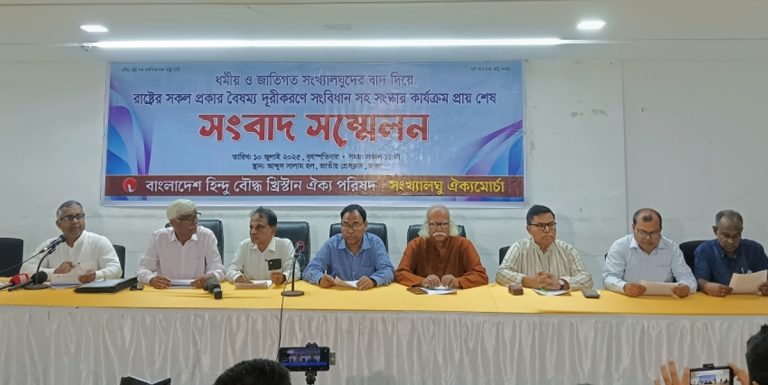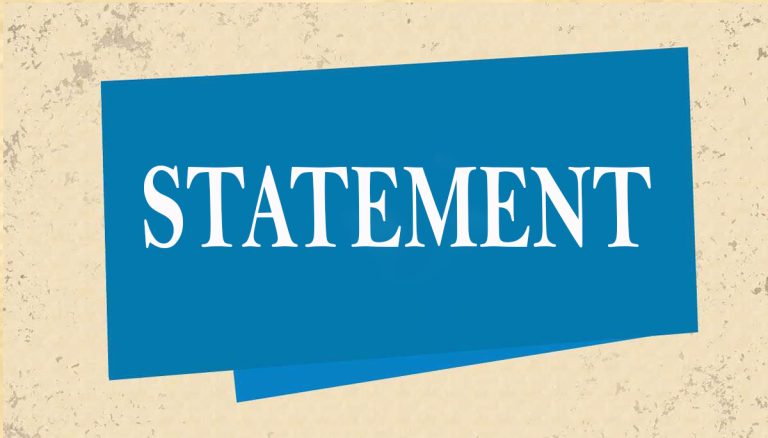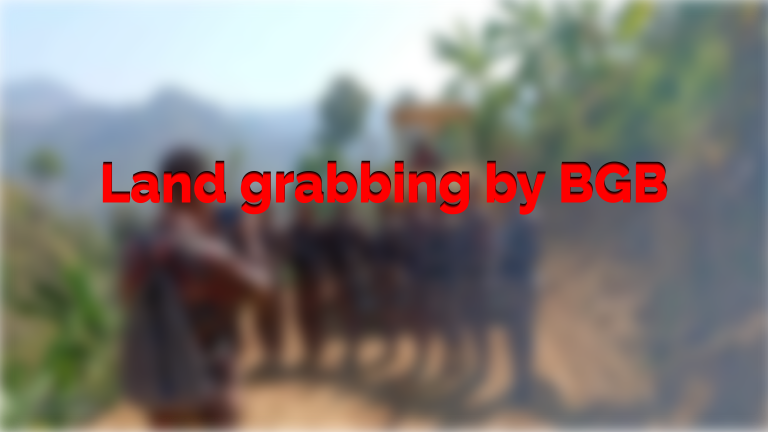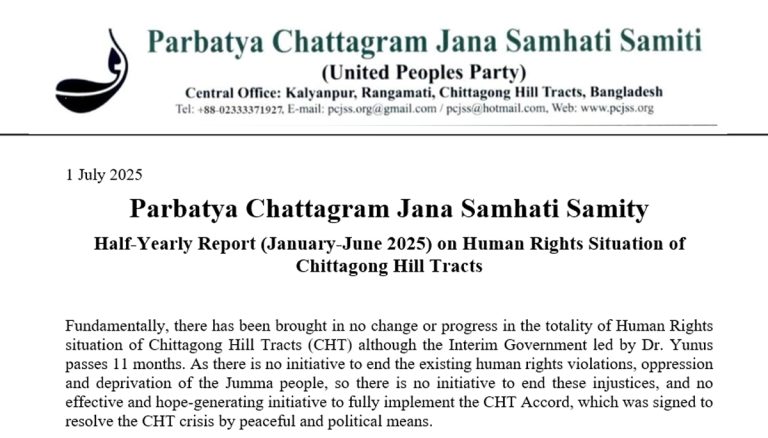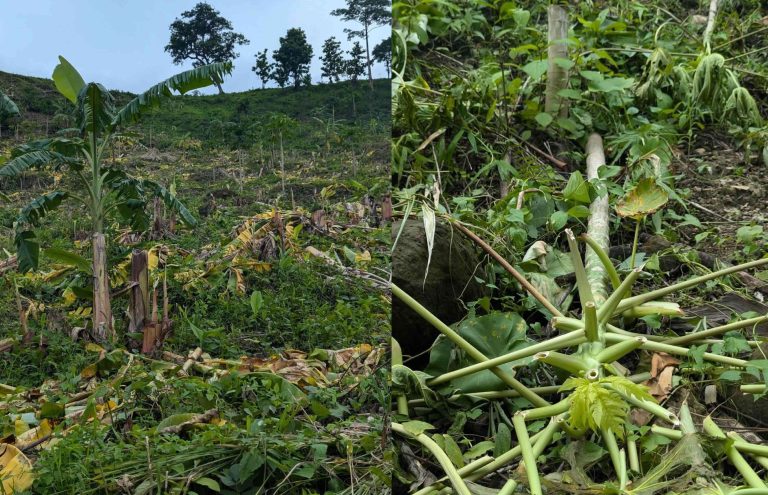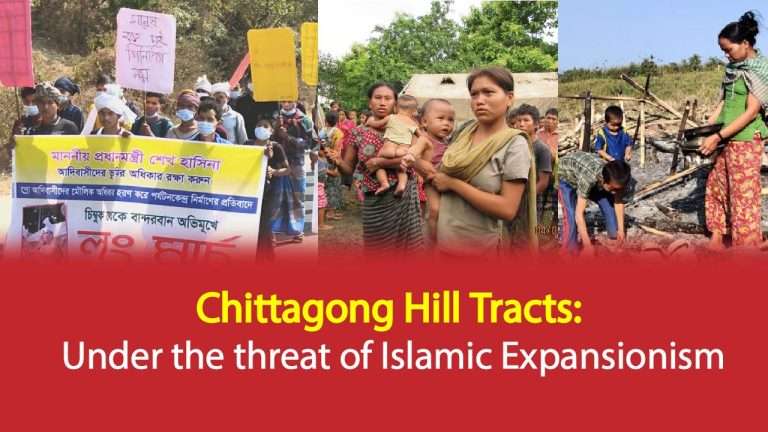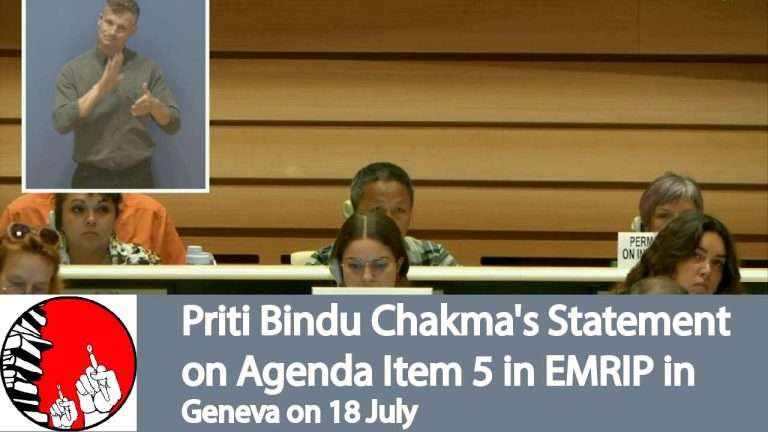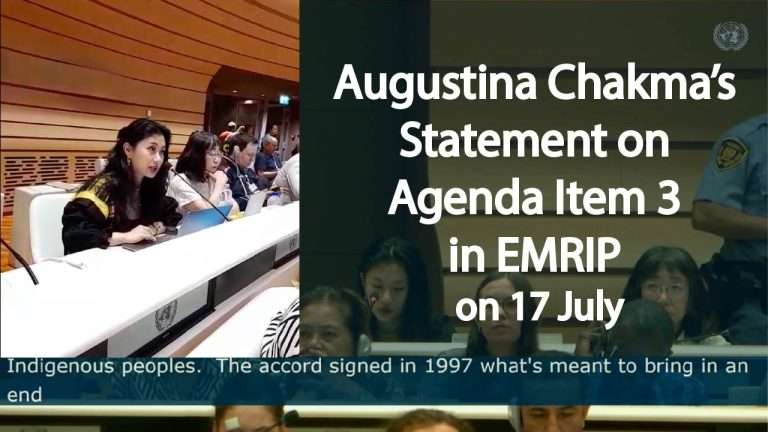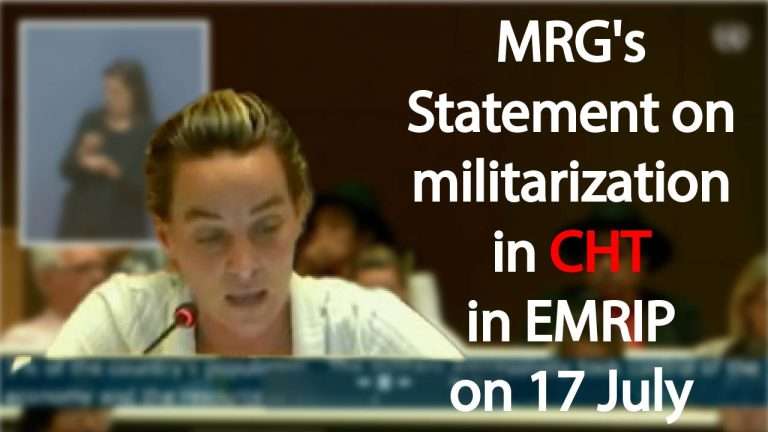Pradhir Talukdar
The prospect of that day is a fantasy of today. The possibility of 1947 is a daydream in 2019. However, nothing is impossible. By the time Mahatma Gandhi waged the Satyagraha movement in 1917 and started the Non-Cooperation Movement in 1922, he did not imagine that one day India will became independent. Similarly, the Bengali nation or Bangabandhu did never visualize that they would get independence in 1971 when the language movement started in 1952.
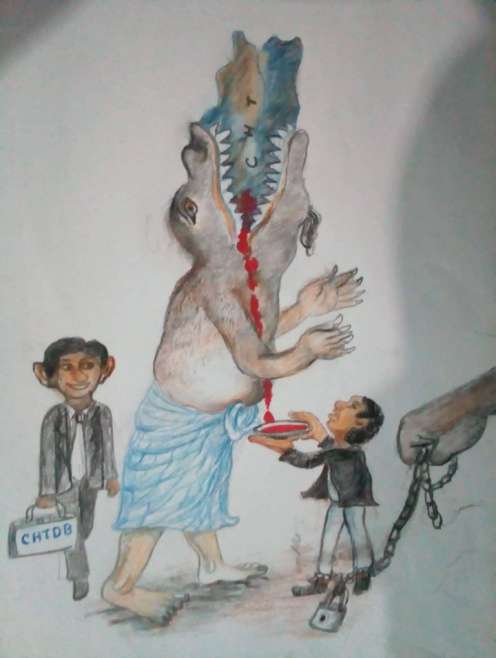 Annexetion of Chittagong Hill Tracts (hence forth CHT) to Indiain 1947 was a chance and in 2019 it is a mere unrealistic, unlikely and a castle in the sky. But yet in CHT, it is not only the Chakma people but also all the indigenous peoples, the people of Rangamati and northern part in particular, cherish this wish and longing at heart. The Chakma, Tripura and Mog (Marma) people living in India also think that their future could have taken a different turn if that part of Chittagong had been a part of India.
Annexetion of Chittagong Hill Tracts (hence forth CHT) to Indiain 1947 was a chance and in 2019 it is a mere unrealistic, unlikely and a castle in the sky. But yet in CHT, it is not only the Chakma people but also all the indigenous peoples, the people of Rangamati and northern part in particular, cherish this wish and longing at heart. The Chakma, Tripura and Mog (Marma) people living in India also think that their future could have taken a different turn if that part of Chittagong had been a part of India.
The 3rd June Plan provided the basic guidelines of the partition scheme of the sub-continent and the 1941 Census was accepted as the baseline. The Muslim majority areas were to be included in Pakistan and the Hindu majority areas in India. By this logic, the CHT with a 98.5% non-Muslim population would have been included in India. The CHT leaders went to New Delhi prior to independence and received assurance from the Indian National Congress leaders, Vallabhbhai Patel in particular, that the CHT would merge in India.It was interesting that the fate of the non-Muslims (Buddhists, Hindu and Christians) of CHT were linked up with the process of the partition of Bengal. The CHT was an excluded area and the majority inhabitants were non-Muslims. On 15 August of 1947 the people of CHT and British officer Mr. G L Hyde, the then Deputy Commissioner of the region hosted the Indian tri-color flag in Rangamati.
It is one of the greatest fallacies of partition that the CHT with a 98.5% non-Muslim population was included in Pakistan. Though 14 August falls as Independence Day for Pakistan and 15 August as Independence Day for India, the Report of the Bengal Boundary Commission came to light at night of the 17th August. On this day CHT’s annexation to Pakistan got published. Immediately, a chain of protest demonstrations followed and Indian flags remained at the top of all official buildings at Rangamati until Pakistani soldiers pulled them down on 21 August. Since then, the CHT region is considered as occupied colony by Pakistan and later Bangladesh as it enjoyed excluded area status since British era. Sneha Kumar Chakma (S K Chakma) and his followers fled to India to avoid capture. For next two years, he tried to convince the Indian leaders for a military intervention there. “Though Patel was enthusiastic, Nehru was shaky, unwilling to do anything that might justify the Pakistani inspired effort to take over Kashmir.”
The Chakma National Council of India (CNCI), an apex body of the Chakma people has been observing August 17 as a Black Day with outrage. Observing of Black Day on August 17th by the people of CHT may be of anti-sovereignty. Since Bangladesh is now an independent sovereign country. But there is nothing to say that, Bangladesh got CHT by chance of inheritance from Pakistan.
But while the CHT people launched movement for their right to separate entity under the leadership of Manabendra Narayan Larma (M N Larma), the Bangldesh government, having ear-marked the CHT as a ‘delocate’ region, has strengthened its control with excessive militarization and rehabilitation of millions of Muslims from plains. In order to keep the country’s boundary line integral, Bangldesh has done all that is right. Army cantonments were established in CHT. Millions of Bengali Muslim families have settled in the anchorage of the hill area, especially in Indian border areas of the hills which is known as ‘population transfer policy’. At present CHT is fully Occupied Region.
As per the report of CHT Commissionin 1993, an organization of European countries, 1 Army behind 5 Jumma people. This is a terrific military presence in this part of the globe. In 1947 the ratio of Jumma People and Muslim was 98:1. Now, after 73 years, the ratio is getting reversed. Now, it shows 49 Muslims and 51 Jumma people and within the next 50 years, the population figure of 1947 will get exactly opposite, i.e; 98% Muslims and 2% indigenous people in the CHT.
We all are Indian, whether we live in India or not. We were in India. India is our mainland (Motherland). Today’s Pakistan, Bangladesh and India were in the vast Indian subcontinent, a single British colonised land mass. Historically we are all Indians, Indians culturally, traditionally and emotionally. Both Chakma and Tripura communities have been cherishing the stories and values of Ramayana and Mahabharata. We have our own language and culture but were overwhelmed by the deep rooted influence of Indian civilization.
All three major religious communities the Buddhist, Hindu and Christians of the CHT region expected to be integrated into India during the partition in 1947. The name of Chakma may have come first, as they were in the front line in raising the voice to be merged in non-Muslim and Hindu dominated India. The people of Tripura community also wanted to be included in India being annexed with the Kingdom of Tripura.
All non-Muslim dwellers were Indians and remain pro-Indian by passion in the Pakistan occupied CHT, later part of Bangladesh. Bengali Muslims too could not be Pakistani either. In 1971 Bangladesh became independent as consequence of denial Urdu language forcefully imposed on Bengali speaking people as the national language by Pakistani regime in 1952. The very existence of present Bangladesh is impossible without direct support by India. It is doubtful whether Bangladesh independence struggle would have ended even in nine years if India had not provided shelter and all kinds of backing.
Even naming of the Chakmas and Tripuras is Indian in nature literally and culturally, let alone the case with the Mog or Marma people who are of Myanmar origine. For instances, Bharat Chandra, Ram Chandra, Sita Devi, Laksman Sen, Indrajit, Shyamali Chakma or Durga Ram, Arjun, Dasarath Deb, Lakshmi Rani, Shyama Charan Tripura and so on. Once upon a time, sets of books of Ramayana and Mahabharata were kept in proud in every cultured family of Chakma and Tripura. The story of Ram-Lakhan is told by elders in generations. The present generation too is pond of the qualities of DharmarajYudhisthira, the strongest Bhishma and the Arjuna.
The unfortunate history of negligence is that the Chittagong Hill Tracts was occupied by East Pakistan during the partition in 1947. Vallabhbhai Patel rightly spoke for inclusion of CHT in India, if necessary, by using arms. Hence he encouraged Sneha Kumar Chakma and said: “Go, we are with you. If necessary, CHT has to be retained with India even through fighting. They are non-Muslims and their homeland is bound to include in India. But on the other end, Jawhar Lal Nehru was afraid of losing Firozpur of Punjub and Kashmir. However, naturally, it was for the same reason, G. L. Hyde, British Representative and then DeputyCommissioner of CHT, himself, officially hoisted the tri-color flag at his residence along with the tribal leaders.
Today, even after seven decades, the people of CHT did not forget the Bengal Boundary Commission’s wrongdoing. Not only the people of the hills of Bangladesh but also millions of their sympathised fellow Indians who have fallen on Indian soil, protest in all possible terms and demand admission of mistake (Apology) and injustice done by the British. We are saddened by the racial intolerance as well as religious persecution by the neighbours on the Hindu, Buddhist and Christian minorities in Bangladesh.
In context of observing August 17 as Black Day, neither the government of Bangladesh nor the Bengali people are one of the party concerned. There is none against the statement that CHT is an integral part of Bangladesh. The landmass of CHT, its people and resources all belong to Bangladesh. But the discriminating governance upon the CHT people who accept the reality and want to live in peace with protection of their ethnic entities, cannot be endorsed. You have entered upon an Accord (CHT Accord of 1997),whereas, the Accord will not be implemented-this cannot be accepted or even tolerated. The CHT likely to be Kashmir of Bangldesh in near or distant future, the possibility of which cannot be denied if any bold policy is adopted to implemet the Accord.
The British cultivated the historic seed of their own expulsion, dividing, discriminating, and depriving the Indians colonised for centuries. In the case of Bangladesh, if she does not keep the tiny group of population in warmth of heart, as such, how much time could it take to spell in auspicious consequence? On the other hand, if India delays in exhibiting her kind heart towards this friendly population of Hindu, Buddhists and Christians, it would not require the next 50 years to get parts of Tripura and Mizoram as like as Badarpur, Karimgaunj or Hailakandi of Assam. There as on is nothing else but with the course of inward population waves coming from plains as well as adjacent hills of the neighbouring country, there has been a significant threat of unabated infiltration of the Rohingya people into CHT. Another Kashmir is likely to be born on this frontier of our beloved land.
